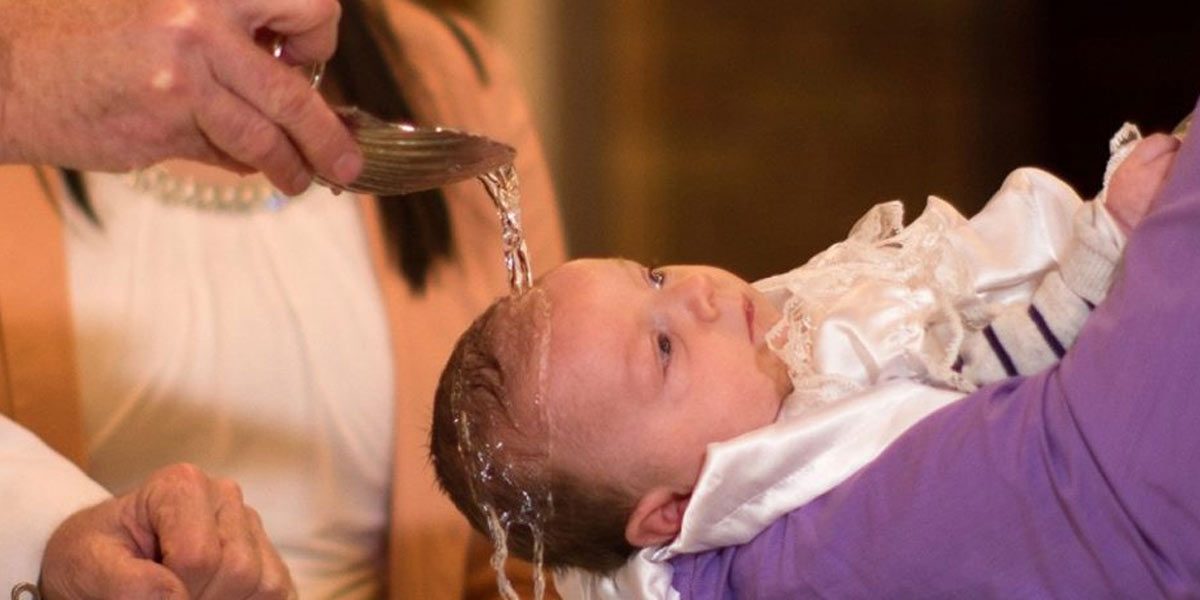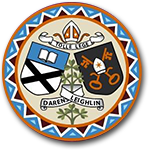
Congratulations on the birth of your child! All of us share in your joy and look forward to welcoming your child into our parish community through the sacrament of Baptism.
Your own Faith is Important
Your most important preparation is to look at your own faith. Your baby will be born with your features and will pick up your mannerisms. As he or she gets older your child will grow up, too, with your faith. In requesting Baptism you, as parents, are acknowledging your own faith and your desire to pass on that faith to your child. The whole community share the responsibility of helping you and your child grow in the faith which they themselves will accept as their own in years to come.
Baptism Dates and Arrangements
Baptism takes place in St Joseph’s Church, Baltinglass on the 2nd Sunday of every month at 12.15pm.
As dates vary for St. Mary’s Church, Stratford and St. Oliver Plunkett’s Church, Grangecon, please contact the Parish Office for details.
All arrangements should be made through the Parish Office at least three weeks prior to date of baptism.
Baptism Preparation Meetings
Members of our Baptism Preparation Team will host a meeting of parents each month to prepare for the ceremony. Their involvement in your baby’s baptism is a reminder that baptism is more than just a family occasion, but very much a celebration of welcoming a new member into the parish community. A date for the meeting will be given to you at the time of booking.
The Rite of Baptism
The Reception of the Child
The first action of the Church in the Rite of Baptism is one of WELCOME. Following the example of what Jesus did in his life and ministry, the priest, in the name of the Church, welcomes the parents, godparents, families and, of course, the child for baptism. This welcome typically takes place at the door of the church. It marks a welcome of the child not just to this sacrament but to the life of the Church itself and the sacraments of the Church.
During the Reception of the Child, parents share the NAME of their child and state their commitment to sharing the gospel and their faith with their child. Having declared their wish to have their child baptised, parents and godparents publicly make the SIGN OF THE CROSS on their child’s forehead. The sign of the cross is the sign of our faith. It is the sign of the depth of God’s love for us. It is a sign that accompanies us for the rest of our lives.
The Liturgy of the Word
Families will generally move at this point from the door of the church to take their places to listen to a number of scripture readings. There can be no celebration of the sacraments without the proclamation of the Word of God. This suggests that scripture is central to our faith. And this is true. Because through the texts of scripture God speaks to us today. To be a Christian means to unite oneself ever more deeply with the life of Christ. If we want to come to know and be followers of Christ, then we have to read and live the Gospels. In them we get to meet Christ, the Word of God, who has come to speak with us, in his own words and by his own life.
The Liturgy of the Word concludes with our intercessions to God and a litany of the saints. These elements remind us that God continually listens to our prayers and that on our Christian journey we have the witness, and support of the saints who have gone before us, having lived lives of faith.
Anointing with the Oil of Catechumens
Before baptism a child is anointed with the Oil of Catechumens (the name for those preparing for baptism). The prayer that precedes the anointing reminds us that the world we are born into is one where the condition of sin and its consequences exist. The Church calls this Original Sin and we see its presence in our world every day in terrible events. But through the love and grace of God, we are freed from the reality of that condition. The prayer and the anointing express this truth and God’s care and protection of us at every step of life’s journey. From our baptism onwards we are strengthened to live as God wants us to through the power of Christ and the Holy Spirit.
The Celebration of Baptism
Having welcomed the child and their family at the door of the church, listened to God’s Word and anointed the child with the strengthening Oil of Catechumens, the child is brought to the font for baptism.
This is what we are here to do, to baptise them so that they may share in the faith of the Church and have new life with Christ through water and the Holy Spirit
Before baptism a PRAYER OVER THE WATER is said. The prayer recalls the great moments of salvation history. Together, the water and the prayer, remind us of who we are through baptism: a new creation, freed from the slaveries of this world, made in God’s image, gifted with the Holy Spirit, and sharers in Christ’s resurrection.
Baptism is not a casual step on life’s journey. It sets us firmly on a definite path which this child now shares.
The PROFESSION OF FAITH is a necessary step in the celebration of baptism. Parents and godparents make this profession as part of accepting the responsibility and the privilege of sharing their faith with their child. The profession of faith is two-fold, involving a renunciation of sin and a profession of faith.
Now we are ready for the BAPTISM of the children in water and in the name of the Trinity – Father, Son and Holy Spirit. These children are now part of the family of God. This is the water of life that washes us clean from sin and the human condition; this is the water that leads us into a new life, a new relationship with God and with the Christian community.
Post Baptism
Following the baptism, we experience a series of rites that begin to unfold the meaning of what we have just done in baptism. Each of these simple yet profound rites consist of a symbol, an action and a prayer. Together these express something of the meaning of baptism and its implications for who we are as Christians.
Anointing with Chrism:
After baptism the crown of the infant’s head is anointed with Chrism (olive oil, perfumed with balsam). This anointing confirms our baptism with water and signifies our sealing with the Holy Spirit. Through baptism each of us has been joined more closely with Jesus Christ and are called to share in his work. Every Christian is capable of doing all this because we have been given the gift of the Holy Spirit. (from this action comes the word: ‘Christening’).
Lighted Candle:
The Paschal candle stands as a sign that Jesus is the light of the world living among us. It was first lit from the fire at the Easter Vigil and is lit at our baptism and at our funeral, encompassing the span of our earthly Christian journey. The Paschal candle is used to light the baptismal candle, which is entrusted to parents, the first teachers of faith. As parents receives this lit candle they are taking on the privileged task of supporting their child as they grow and mature in faith, helping the child to keep the light of faith burning brightly in their lives.
Clothing with White Garment:
In the early Church people took off their old clothes, entered the baptismal pool for baptism and were wrapped in new garments when they emerged – their old way of life was shed for a new way, a new life in Christ. The prayer in today’s rite reminds us that through baptism we are a new creation, clothed in Christ. Through baptism we are invited to wrap ourselves in Christ and to live in dignity as children of God. That is what a parent is doing when they wrap their child in a white shawl or garment at this point.
Ephphetha: (‘be opened’)
The priest blesses the ears and mouth of the child as a powerful reminder of the mission we each are given in baptism: to open our ears to receive God’s word and to open our mouths to share it with others.
Concluding Rite
The newly baptised, their parents and godparents gather around the altar with the priest. This represents the final stage in the journey of baptism, having travelled from the door of the church, to the ambo and, then, to the font.
One day the child will complete their initiation into the Church through the sacraments of Confirmation and Eucharist. For now, from this day forward, the newly baptised are invited to gather around the table of the Lord with the Christian community, primarily in our Sunday celebration of Mass.
The rite begins with the praying of the Our Father, the prayer that Jesus taught us to pray. It is a prayer that has held a very special place in the life of the Christian community from the very beginning. And it can hold a special place in the daily prayer of every Christian family.
The Blessing and Dismissal at the end of the baptism remind us that we go about the world with the blessing and company of God. Here, we pray in turn for the mother, the father and all who have gathered.
Registration of Baptism
After the ceremony, the baptism is recorded in the Baptismal Register of the parish. This record includes the full names of the child, parents and godparents, the child’s date of birth, the date of the baptism and the name of the officiating priest.
A Certificate of Baptism can then be issued by the parish as and when required.
 St. Joseph's Parish
St. Joseph's Parish